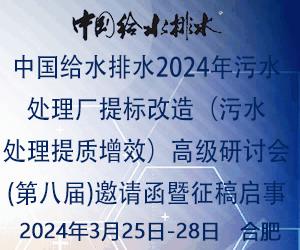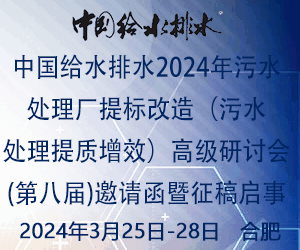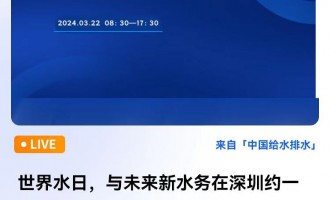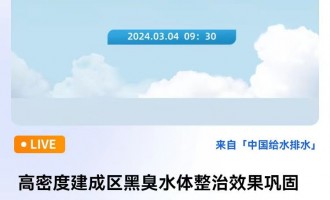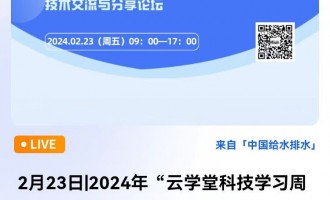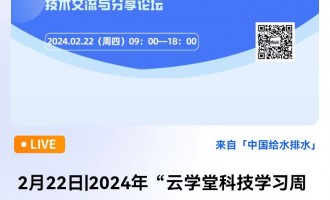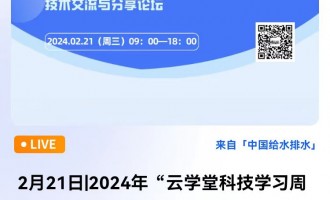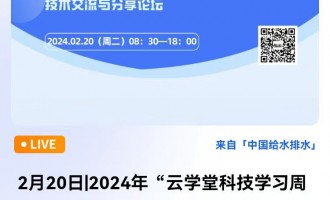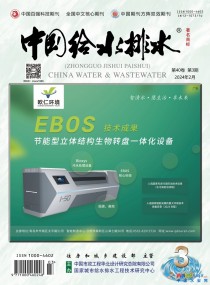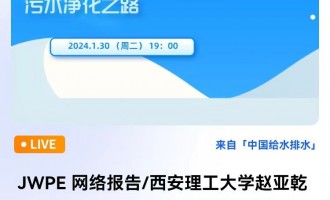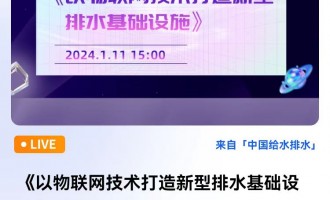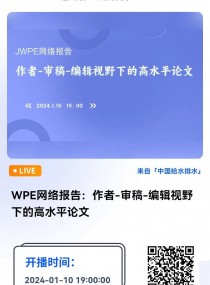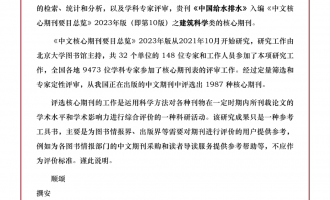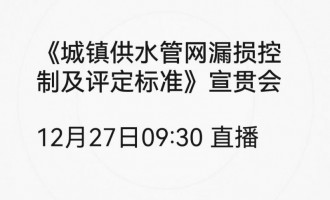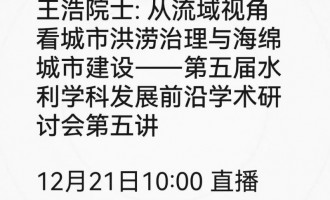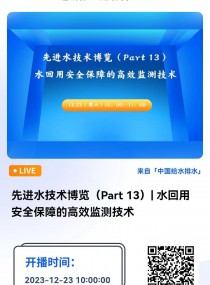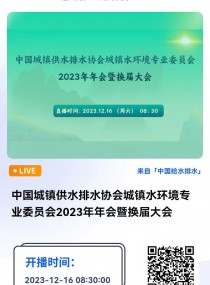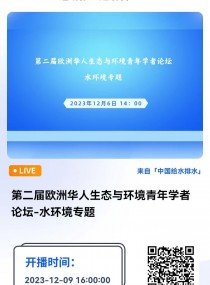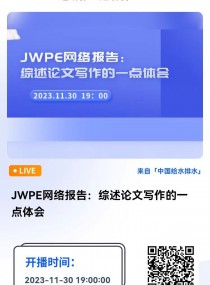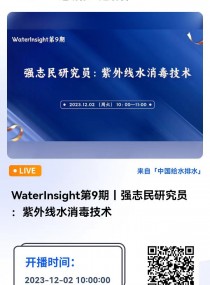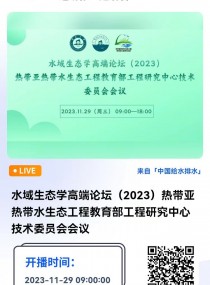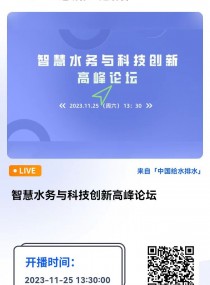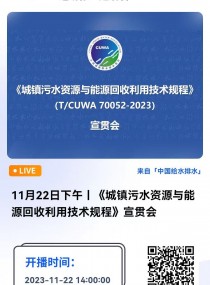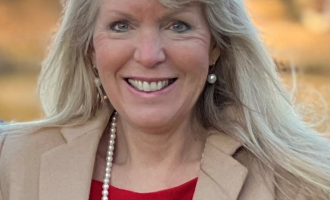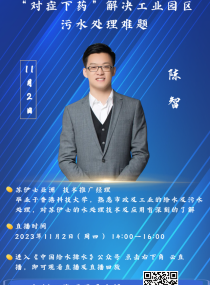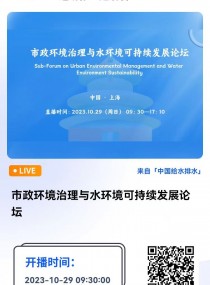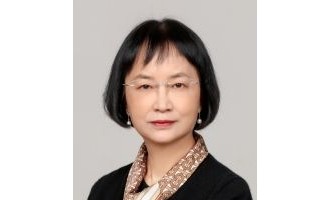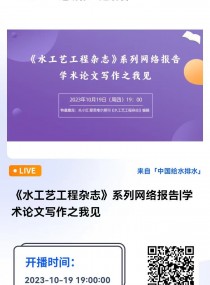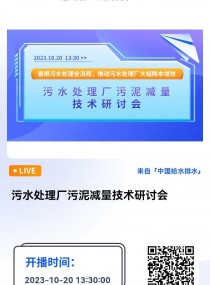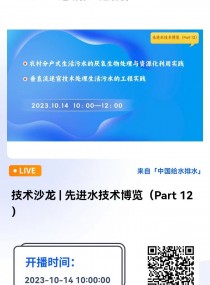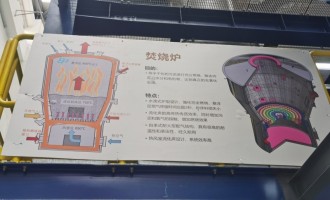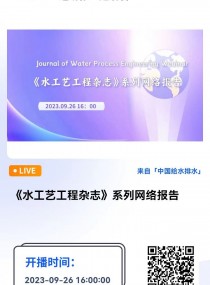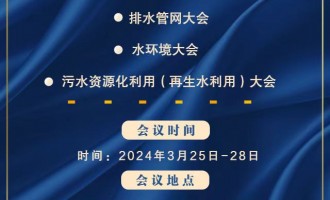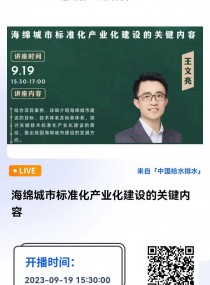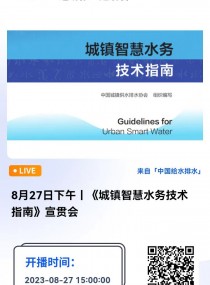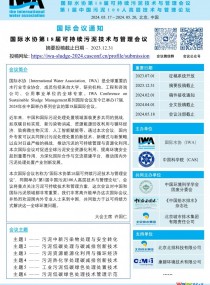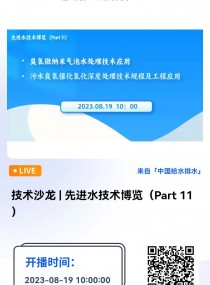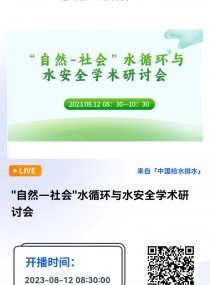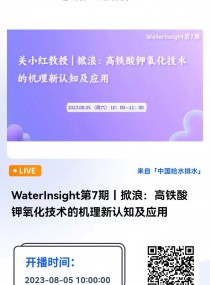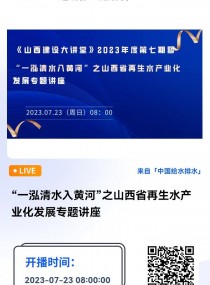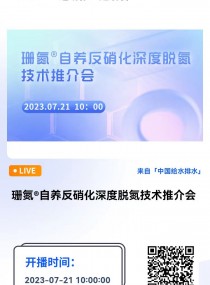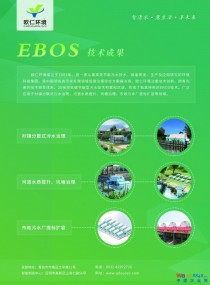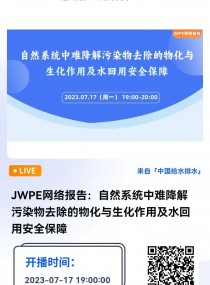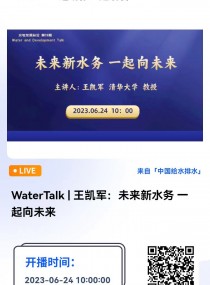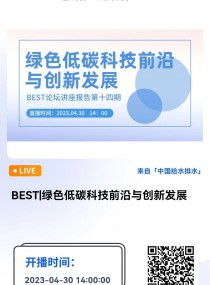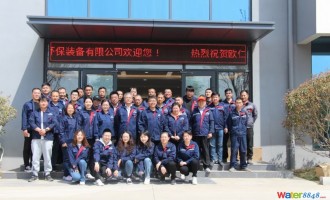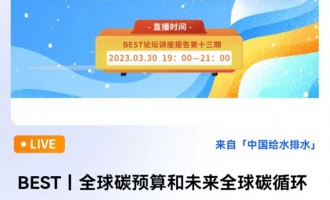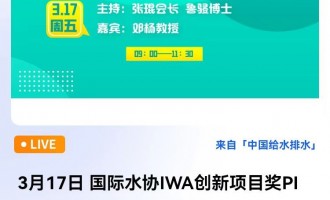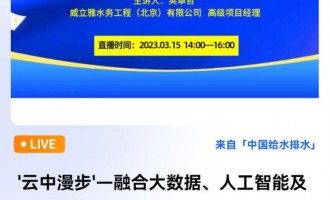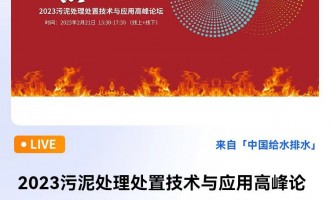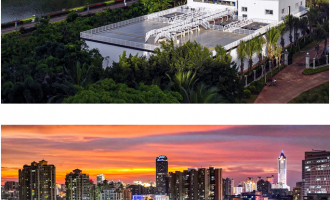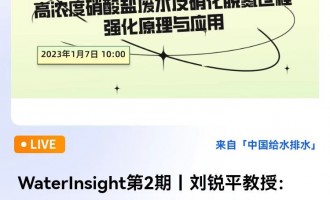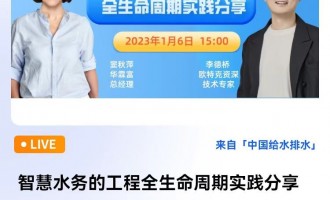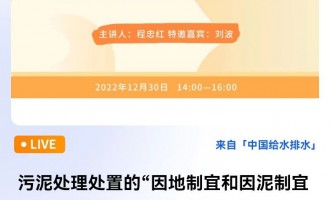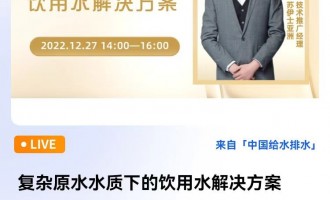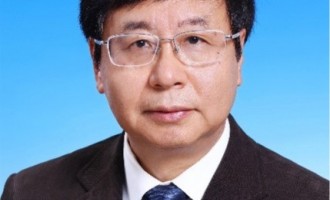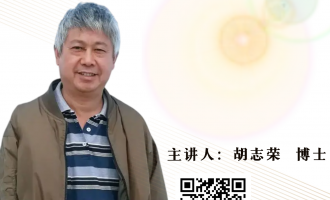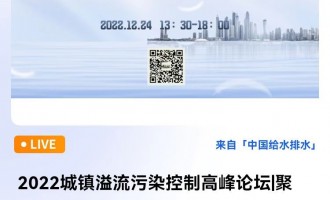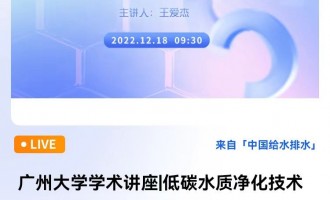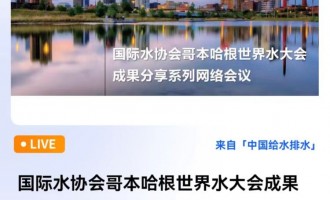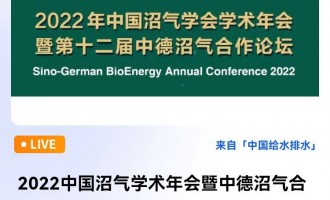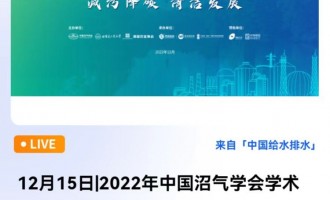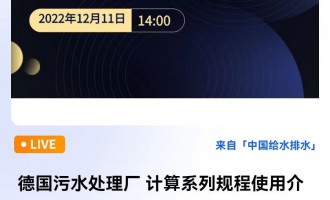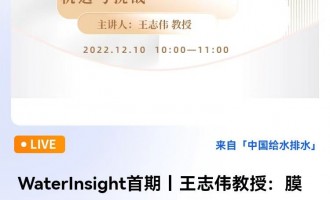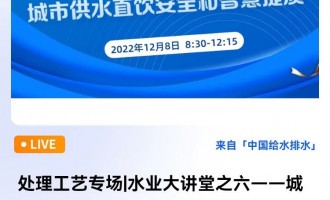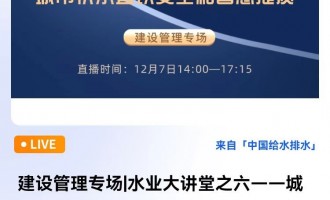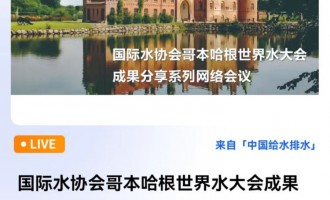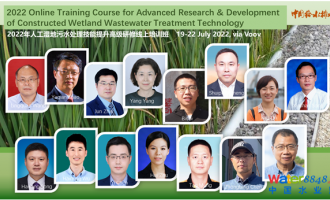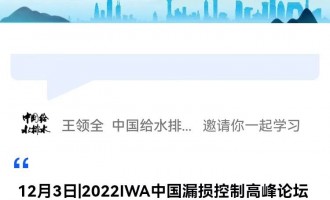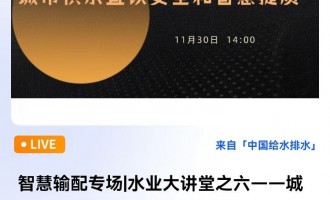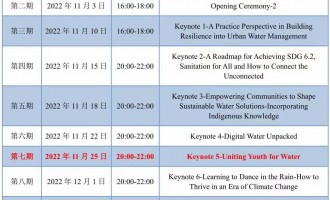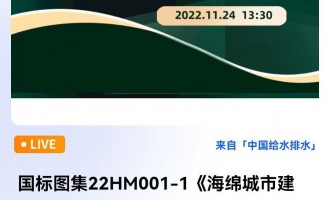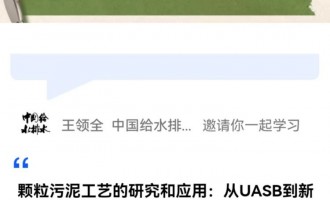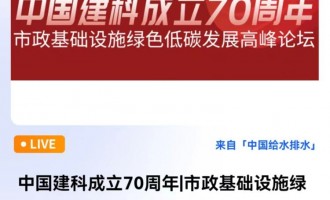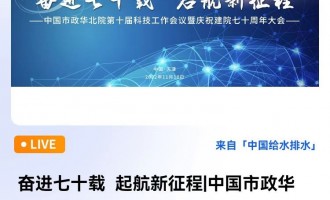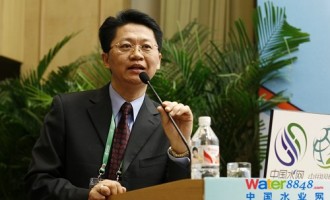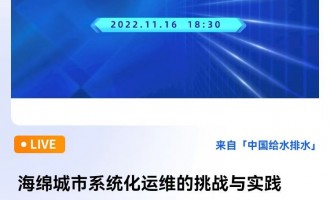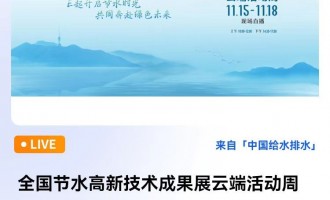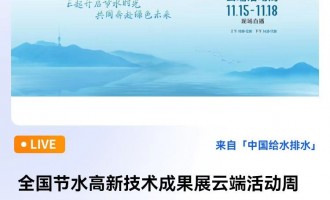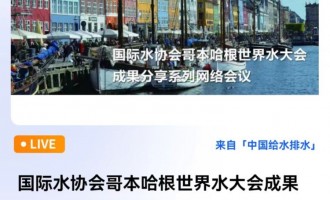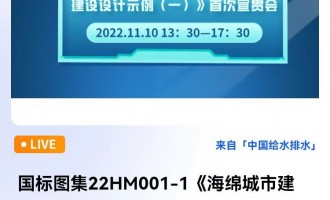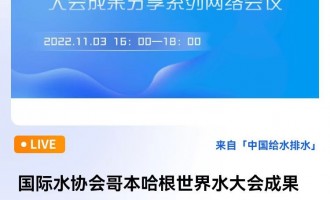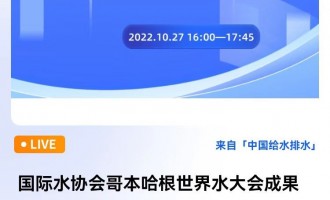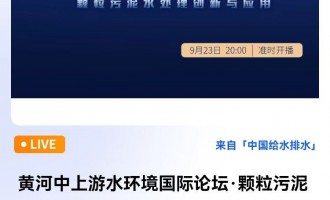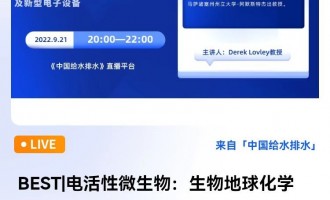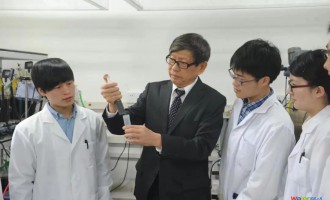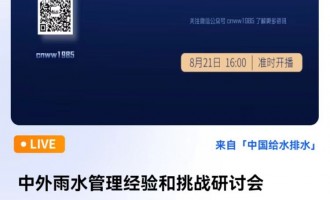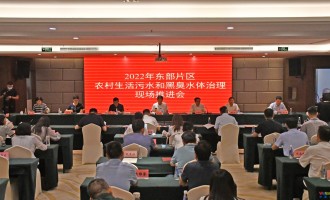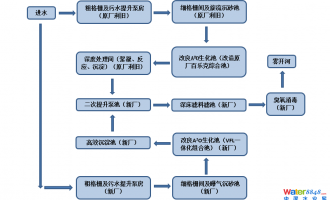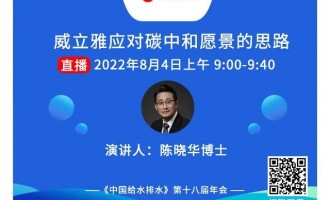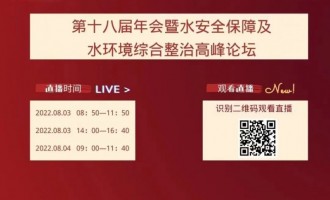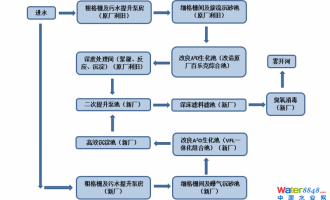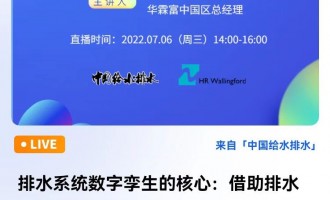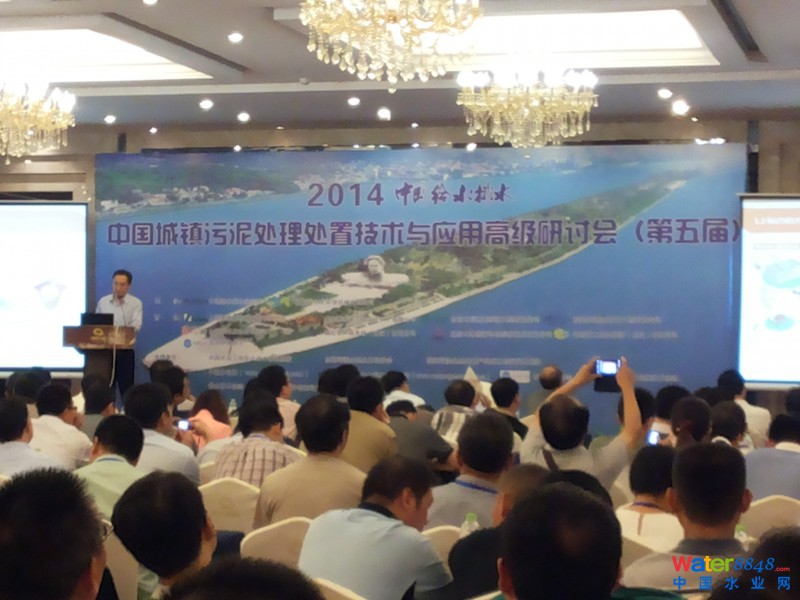
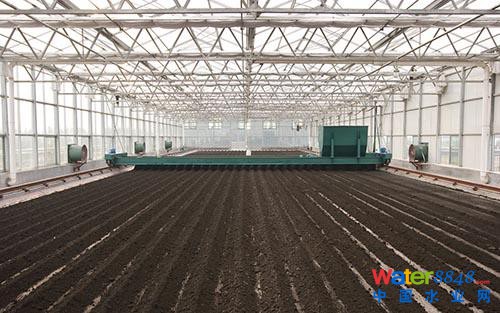
對重金屬不超標的污泥,可以通過厭氧消化或者好氧堆肥進行土地園林利用,也可以進行高附加值資源提取回收。 資料圖片
預計到2020年,我國的污泥產量將達到6000萬噸~9000萬噸
國外傳統的技術工藝還需要進一步研究和提升,才能適合我國的污泥處理處置
總體道路應是污泥和城市有機質廢棄物協同厭氧消化,實現規模化生物質燃氣回收,生產高品質綠化營養土
下一代污水處理模式應該是基于污染物污泥富集資源回收模式
◆中國環境報見習記者 張蕊
近些年,隨著我國不斷興建污水處理廠和配套管網日趨完善,污泥處理成為水務領域關注的重點。
由于不同地區的污泥泥質、經濟社會發展水平不同,因此在處理方式、處置路線上也面臨著不同的挑戰和選擇。在日前舉行的2014首屆珠三角(東莞)水處理創新交流會上,同濟大學環境科學與工程學院院長戴曉虎表示,截至2013年,我國污水處理廠有5300座,污水處理能力達到1.63億立方米/日,年處理污水量450億立方米,污水處理規模已經接近美國。從資源化利用角度來說,要從污泥的性質和特點考慮處理處置的技術。下一代污水處理模式,應該是基于污染物污泥富集資源回收的模式。
泥質決定技術路線
污泥中60%以上都是蛋白質,此外還含有有機質。從資源化利用角度,要從污泥的性質和特點考慮處理處置技術
記者:請問我國污泥產生的狀況如何?
戴曉虎:根據測算,我國每年產生3000萬噸~4000萬噸含水率在80%左右的污泥。隨著“十三五”的到來,污泥量還會增加。預計到2020年,我國的污泥產量將達到6000萬噸~9000萬噸。
需要強調的是,這里所說的污泥不包括工業廢水污泥。如果要加上工業廢水污泥,我國的污泥產生量還將更大。
據測算,從污水里轉入污泥中的COD比例大概是30%~50%,轉入污泥中的氮約為20%~30%,磷約為90%。如果它們得不到有效處理處置,那么我國的節能減排目標將大打折扣。所以不能繼續重水輕泥的現狀。
記者:和國外相比,我國污泥處理處置處于怎樣的水平?
戴曉虎:在污泥處理過程中,國際上的通行標準是“四化”,即穩定化、減量化、無害化、資源化。而我國的現狀是80%甚至90%的污水污泥只是簡單濃縮脫水。
在穩定化方面,我國污泥普遍沒有進行厭氧處理,好氧堆肥也只是局部性進行。污泥處理如果做不到穩定化,那么接下來的無害化和資源化也就無從談起。特別值得注意的是有些地方推出的高干脫水,添加大量無機材料對污泥進行脫水,其實根本談不上資源化。
如果污泥沒有經過穩定化處理,其中就會含有大量有機物,會給環境帶來嚴重的二次污染。在國際上,在前端對污泥進行濃縮或者厭氧好氧處理,然后脫水,接下來的處置可以在廠區里或者到廠外去進行干化焚燒。
記者:我國污泥有什么特點?如何針對這些特點對污泥加以處理處置?
戴曉虎:圍繞污泥泥質,在我國還有爭論。總體上,我國污泥的有機質含量比較低。和國外相比,正因為有機質含量低,所以我國污泥中總氮、總磷含量也相對偏低。
另外需要強調的是,通過測算,我們發現污泥中60%以上都是蛋白質,此外還含有有機質。從資源化利用角度來說,要從污泥的性質和特點考慮處理處置的技術。
有觀點認為,因為我國污泥含沙量高、有機質含量低,所以污泥厭氧消化的路線較為合適。對此,我認為,一方面,通過提升污泥中有機質含量,進而才能選擇更好的處理工藝,對資源加以利用。另一方面,國外的傳統的技術工藝在我國還需要進一步研究和提升,才能適合我國的污泥處理處置。
穩定是基礎,厭氧需重視
厭氧消化和干化焚燒組合,可以顯著降低后一個工藝單元的投資和運行費用,并可降低污泥含水率和有機質含量;另外一種技術路線是集中式的城市有機質廢棄物和污泥協同處置
記者:為什么污泥在干化焚燒前要進行厭氧消化?如何提高厭氧消化效率?
戴曉虎:厭氧消化和干化焚燒組合,可以顯著降低后一個工藝單元的投資和運行費用,并可降低污泥含水率和有機質含量,有助于實現能耗平衡。在德國慕尼黑一個項目中,污泥經過厭氧消化再干化焚燒,產生的能源基本可以實現項目能耗的自給自足,彌補厭氧消化的成本,因此國外有不少城市選擇了這樣的組合工藝。
在污泥資源和能源回收利用方面,沼氣利用是成熟而且經過工程驗證的方法。在提升厭氧消化效率方面,上世紀70年代我們關注提高固體負荷或者是提高熱轉化率及容積負荷。
現在我們談厭氧消化,還應該包括如何將沼氣中的甲烷進行提取分離,這也是提高厭氧消化效率的方法。在2000年以后,第三代厭氧消化池的污泥含固率大于10%,污泥降解率可達50%。
記者:除了厭氧消化,還有哪些技術路線可以考慮?
戴曉虎:另外一種技術路線是集中式的城市有機質廢棄物和污泥的協同處置。污泥含固率如果在10%,那么厭氧消化的效率也僅有1.5 kgVss/m3d ~2kgVss/m3d。從游離氨、熱值的角度,可以通過協同餐廚垃圾等有機質來提高厭氧消化的效率,大概可以提升到6kgVss/m3d ~10kgVss/m3d。
目前,在高含固污泥/協同厭氧消化技術方面也有一些示范工程。主要包括遼寧省大連夏家河污泥集中處理示范工程、浙江省寧海污泥處理示范工程、湖北省襄陽污泥處理示范工程、湖南省長沙污泥集中處理示范工程等。這些示范工程已經取得良好效果。
我們認為下一代污水處理模式應該是基于污染物污泥富集資源回收的模式。第一階段最大化利用生物污泥富集污染物,第二階段回收碳和磷,實現高效高值利用、氮的高效轉化和回收。這一模式的目標是能耗輸出、氮和磷回收,反應時間為傳統活性污泥法的1/3~1/4。
珠三角處置污泥有何藥方?
對重金屬不超標的污泥,建議通過厭氧消化或者好氧堆肥進行土地園林利用,也可以進行高附加值資源提取回收
記者: 珠三角地區的污泥現狀是什么?有何特點?
戴曉虎:截至2014年,珠三角擁有城鎮污水處理廠237家,污水處理能力約為0.11億立方米/日,2013年年產污泥突破200萬噸(含水率約為80%)。預計2020年污泥產量將達到400萬噸~600萬噸/年。
珠三角地區污泥經過脫水后含水率較高,有機質比例偏低,并呈季節性變化。寄生蟲卵、病原微生物等致病物質超標較普遍。部分污泥存在銅、鉛、鉻等重金屬超標現象。污泥中還含有多氯聯苯等難降解有機物。
珠三角地區的污泥處理現在主要以濃縮脫水為主,還有一部分進行深度脫水,也有一些污水處理廠對污泥進行水泥窯協同處置。例如當地的越堡水泥廠,就對污泥進行水泥窯協同處置。
我對珠三角污泥處理處置提幾點建議:圍繞資源化循環利用,在珠三角地區尤其是農村地區,重金屬如果超標,則可以考慮采用協同焚燒方式。同時,熱解氣化技術還在開發中。而熱能無機物也可以作為建材回收利用。
記者: 您怎么評價直接干化焚燒處理污泥?有哪些技術值得關注?
戴曉虎:我個人不主張直接采用干化焚燒處理污泥,因為我國的污泥泥質還不穩定。如果要單獨干化焚燒,就必須采用流化床工藝,整個工藝從資源回收角度來講做得還不夠。
如果污泥的重金屬含量超標嚴重,也可以采用干化焚燒的方式對污泥進行處理。而熱解技術和協同技術可能會有市場空間。對重金屬不超標的污泥,我強烈建議通過厭氧消化或者好氧堆肥進行土地園林利用,也可以進行高附加值資源提取回收。
在高附加值資源提取回收方面,無論是提蛋白、甲烷回收等方法都可以采用。
總體道路還應該是污泥和城市有機質廢棄物協同厭氧消化,實現規模化生物質燃氣回收,生產高品質綠化營養土。這些模式在我國山東省、福建省廈門市等地都有實踐,主要處理工藝就是將餐廚、菜市場垃圾和污泥協同處置。
污泥處理處置還有哪些挑戰?
需要技術綜合集成示范;提升污泥品質并進行合理的風險評估;污泥處理處置經費需要落實
記者: 現在我國污泥處理處置還需要解決哪些瓶頸問題?為何土地利用的路線沒有得到重視?您對此有何建議?
戴曉虎:現在污泥處置的瓶頸問題主要包括:單一技術很多并相對成熟,但是需要技術綜合集成示范,研究全流程綜合解決方案。目前厭氧、好氧污泥土地利用受到限制,一方面主要是由于我國目前污泥品質還不高,另一方面,污泥土地利用的風險相對被夸大。
同時,國內還存在強制的污泥“穩定化”要求。相關部門應該就此進行協調,提升污泥品質并進行合理的風險評估。
此外,污泥處理處置經費需要落實。建議可以借用德國做法,在后端根據出產的沼氣量進行補貼。同時,污泥處理處置費用必須融入污水處理費中,污泥、污水處理分不開。
此外,技術開發和市場的有效結合也很重要,需要開發全產業鏈可持續發展的商業模式。而我們也可以斷定,我國污泥處理機遇和挑戰共存,思維理念轉變和前瞻性創新需要勇氣和擔當。同時巨大的市場和需求、大量研發經費的投入,定會引領未來污泥處理處置資源化技術的發展。
污水處理新模式:污染物污泥富集資源回收模式
Not excessive sludge of heavy metals, can land garden use by anaerobic digestion or aerobic composting, can also be of high value-added resource extraction recovery. Profile picture
2020, China's sludge production will reach 60 million tons - 90 million tons
Foreign traditional craft techniques and further research is needed to improve in order for our sludge treatment and disposal
Overall sludge and urban roads should be synergistic anaerobic digestion of organic matter waste, chemical and biological substances to achieve scale gas recovery, production of high-quality green nutritive soil
The next generation of wastewater treatment sludge model should be based on contaminant enrichment resource recovery mode
◆ China Environment News trainee reporter Zhang Rui
In recent years, as China continues to build a sewage treatment plant and associated pipeline network maturing, sludge treatment has become the focus of attention in the field of water.
Due to muddy sludge in different regions, different levels of economic and social development, so the handling, disposal routes are also faced with different challenges and choices. At the recent 2014 inaugural Pearl River Delta (Dongguan) Water Innovation conference, Dean of College of Environmental Science and Engineering, Tongji University Daixiao Hu said that as of 2013, China's sewage treatment plant has a 5300 sewage treatment capacity of 163 million cubic meters / day, the annual amount of 45 billion cubic meters of sewage treatment, sewage treatment capacity has been close to the United States. From the perspective of resource utilization, from a consideration of the nature and characteristics of sludge treatment and disposal technologies. The next generation of wastewater treatment model, it should be enriched sludge recycling of pollutants based mode.
Argillaceous decision technology roadmap
More than 60% of sludge are protein, also contains organic matter. From the perspective of resource utilization, the nature and characteristics of the sludge from the treatment and disposal technologies considered
Reporter: What is the status of sludge how?
Dai Xiaohu: According to estimates, our country produces 30 million tons - 40 million tons moisture content of about 80% of sludge per year. With the advent of "Thirteen Five", the sludge volume will increase. 2020, China's sludge production will reach 60 million tons to 9,000 tons.
It should be stressed that the sludge is not mentioned here, including industrial wastewater sludge. If you want to add industrial wastewater sludge, the amount of sludge produced will be greater.
It is estimated that the proportion of COD transferred from the sewage sludge in about 30% to 50% of nitrogen into the sludge is about 20% to 30%, about 90% of phosphorus. If they are not effective treatment and disposal, so our energy reduction targets will be greatly reduced. So the status quo can not continue heavy water light mud.
Reporter: and abroad compared to sludge treatment and disposal of at what level?
Dai Xiaohu: In the sludge treatment process, the prevailing international standards is the "four modernizations", ie stabilization, reduction, sound, resource. The current situation in China is 80% or even 90% of sewage sludge dewatering simply.
In terms of stabilization, our universal no anaerobic treatment of sludge, aerobic composting is only performed locally. If you can not stabilized sludge treatment, then the next harmless and resources does not arise. Of particular note is the introduction of senior cadres in some places dehydration, adding a large number of inorganic materials for sludge dewatering, in fact, not to mention resources.
If you have not been stabilized sludge treatment, which will contain a lot of organic matter, will give the environment a serious secondary pollution. In the international arena, in front of the concentrated sludge or anaerobic and aerobic treatment, then dehydrated, then disposal in the plant or outside in dry incineration plant go.
Reporter: What are the characteristics of the sludge? How to deal with these characteristics for the disposal of sludge?
Dai Xiaohu: around muddy sludge in the country as well as controversy. Overall, the organic content of the sludge is relatively low. And abroad compared because of low organic matter content, so the total nitrogen, total phosphorus content of the sludge is relatively low.
Also needs to be emphasized is that by calculation, we found that more than 60% of sludge are protein, also contains organic matter. From the perspective of resource utilization, from a consideration of the nature and characteristics of sludge treatment and disposal technologies.
The idea that, because of the high sediment sludge, low organic matter content, so the anaerobic digestion of the route is more appropriate. In this regard, I think, on the one hand, by increasing the organic matter content of the sludge, and then to choose a better treatment process, the resource to be utilized. On the other hand, the traditional craft of foreign technology requires further research and improvements in our country, in order to fit our sludge treatment and disposal.
Stability is the basis, anaerobic need attention
Dry anaerobic digestion and incineration combination can significantly reduce investment and operating costs after a process unit, and reduce the moisture content of the sludge and organic content; another technology route is centralized urban organic waste and sludge together disposal
Reporter: Why sludge before drying and incineration to anaerobic digestion? How to improve the efficiency of the anaerobic digestion?
Dai Xiaohu: dry anaerobic digestion and incineration combination, can significantly reduce the capital and operating costs of a process unit, and reduce the moisture content of the sludge and organic matter content, help to achieve energy balance. In Munich, Germany, a project, do it again sludge incineration through anaerobic digestion, energy generated by the project can be basically achieved self-sufficiency in energy consumption to make up for the anaerobic digestion of cost, so there are many cities abroad chose this combination process .
Sludge recycling of resources and energy, the biogas utilization is mature and proven through engineering methods. In improving the efficiency of anaerobic digestion, 1970s solid load or increase our concern is to improve the thermal conversion rate and volume load.
Now we are talking about anaerobic digestion, but also should include how to extract methane gas separation, which is to improve the efficiency of the anaerobic digestion method. Later in 2000, the third generation of anaerobic digester sludge solids greater than 10%, the sludge degradation rate of 50%.
Reporter: In addition to anaerobic digestion, what technology roadmap could be considered?
Dai Xiaohu: Another technique centralized disposal route is coordinated urban organic waste and sewage sludge. If the sludge solid content of 10%, then the efficiency of the anaerobic digestion is also just 1.5 kgVss / m3d ~ 2kgVss / m3d. From the perspective of free ammonia, calorific value, can improve the efficiency of the anaerobic digestion of food waste and other organic matter through a collaborative, probably can be raised to 6kgVss / m3d ~ 10kgVss / m3d.
Currently, high solids sludge / synergistic anaerobic digestion technology, there are some aspects of the demonstration project. Including Liaoning Province, Dalian Xiajiahe centralized sludge treatment demonstration project, Ninghai sludge treatment demonstration project, sludge treatment demonstration project Xiangyang, Hubei and Hunan Changsha centralized sludge treatment demonstration projects. These demonstration projects have achieved good results.
We believe the next generation of wastewater treatment sludge model should be based on contaminant enrichment resource recovery mode. The first stage to maximize the use of biological sludge accumulation of pollutants, the second phase of the recovery of carbon and phosphorus to achieve efficient use of high-value, high-efficiency conversion of nitrogen and recovery. The goal of this model is that energy output, nitrogen and phosphorus recovery, the reaction time is conventional activated sludge process 1/3 to 1/4.
What sludge disposal PRD prescription?
For heavy metal sludge is not exceeded recommended by anaerobic digestion or aerobic composting garden land use, also can be high value-added resource extraction recovery
Reporter: What is the status quo sludge PRD is? What are the characteristics?
Dai Xiaohu: As of 2014, the PRD has 237 municipal wastewater treatment plants, sewage treatment capacity of approximately 011 million cubic meters / day in 2013 to break 2 million tons annual output of sludge (water content of about 80%). Sludge production in 2020 is expected to reach 4 million tons to 600 million tons / year.
Pearl River Delta region after dewatering sludge moisture content is high, the low proportion of organic matter, and showed seasonal variation. Parasite eggs, pathogenic microorganisms and other pathogenic substances exceeding more common. Part sludge presence of copper, lead, chromium and other heavy metals exceeded phenomenon. Sludge also contains PCBs and other refractory organics.
Sludge Treatment PRD is now mainly concentrated mainly dehydration, as well as part of deep dehydration, there are some sewage treatment plant sludge disposal of cement kiln collaboration. For example, the local Fort cement plants, cement kilns on collaborative sludge disposal.
I PRD sludge disposal a few suggestions: focus on resource recycling, in the Pearl River Delta region, especially in rural areas, heavy metals, if exceeded, you might consider using collaborative incineration. Meanwhile, pyrolysis and gasification technology is still in development. And the thermal energy can be used as the inorganic building materials recycling.
Reporter: how do you evaluate the direct drying sludge incineration? What are the technical cause for concern?
Dai Xiaohu: I personally do not advocate the direct use of drying sludge incineration, because our country is not stable muddy sludge. If you want to separate drying and incineration, you must use the fluidized bed process, the entire process of recovering from a resource point of view in terms of not doing enough.
If the heavy metal content of sludge serious, can also be used for drying and incineration of sludge treatment methods. The pyrolysis technology and collaborative technologies may be market space. Not excessive sludge of heavy metals, and I strongly recommend via anaerobic digestion or aerobic composting garden land use, high value-added resources can also be extracted for recycling.
In the resource extraction recovery of high-value, whether the protein is to provide the methane recovery and other methods can be used.
Overall roads should also be coordinated waste sludge and municipal anaerobic digestion of organic matter, chemical and biological substances to achieve scale gas recovery, production of high-quality green nutritive soil. These patterns of Shandong Province, Xiamen City, Fujian Province and other places have practice, the main treatment process is to dining kitchen, vegetable market waste and sludge disposal collaboration.
Sludge treatment and disposal as well as what are the challenges?
Requires comprehensive integration technology demonstration; improve sludge quality and reasonable risk assessment; sludge treatment and disposal funds needed to implement
Reporter: Now sludge treatment and disposal of bottlenecks which need to be addressed? Why route of land use are not taken seriously? What do you recommend?
Dai Xiaohu: now the bottleneck problem of sludge disposal include: a single lot and relatively mature technology, but requires comprehensive integration technology demonstration study the whole process of integrated solutions. Currently anaerobic, aerobic sludge land-use restrictions, on the one hand is mainly due to China's current sludge quality is not high, on the other hand, the relative risk of sludge land use have been exaggerated.
Meanwhile, there are mandatory domestic sludge "stabilization" requirement. In this connection the relevant departments should coordinate and enhance the quality of sludge and reasonable risk assessment.
In addition, sludge treatment and disposal funds need to be implemented. German practice recommendations can be borrowed at the back end subsidies based on the amount of biogas produced. Meanwhile, sludge treatment and disposal costs must be integrated into the sewage treatment fee, sludge, sewage treatment inseparable.
In addition, the effective integration of technology development and market is also very important, the need to develop business models for sustainable development of the whole industry chain. And we can conclude that our sludge treatment opportunities and challenges coexist, innovative and forward-thinking concept of change requires courage and play. Meanwhile a huge market and demand, putting in a lot of R & D funding, will lead the future development of sludge treatment and disposal technology resources.
Sewage new model: the enrichment of pollutants sludge recycling mode
September 16, 2014 Source: China News NetworkNot excessive sludge of heavy metals, can land garden use by anaerobic digestion or aerobic composting, can also be of high value-added resource extraction recovery. Profile picture
2020, China's sludge production will reach 60 million tons - 90 million tons
Foreign traditional craft techniques and further research is needed to improve in order for our sludge treatment and disposal
Overall sludge and urban roads should be synergistic anaerobic digestion of organic matter waste, chemical and biological substances to achieve scale gas recovery, production of high-quality green nutritive soil
The next generation of wastewater treatment sludge model should be based on contaminant enrichment resource recovery mode
◆ China Environment News trainee reporter Zhang Rui
In recent years, as China continues to build a sewage treatment plant and associated pipeline network maturing, sludge treatment has become the focus of attention in the field of water.
Due to muddy sludge in different regions, different levels of economic and social development, so the handling, disposal routes are also faced with different challenges and choices. At the recent 2014 inaugural Pearl River Delta (Dongguan) Water Innovation conference, Dean of College of Environmental Science and Engineering, Tongji University Daixiao Hu said that as of 2013, China's sewage treatment plant has a 5300 sewage treatment capacity of 163 million cubic meters / day, the annual amount of 45 billion cubic meters of sewage treatment, sewage treatment capacity has been close to the United States. From the perspective of resource utilization, from a consideration of the nature and characteristics of sludge treatment and disposal technologies. The next generation of wastewater treatment model, it should be enriched sludge recycling of pollutants based mode.
Argillaceous decision technology roadmap
More than 60% of sludge are protein, also contains organic matter. From the perspective of resource utilization, the nature and characteristics of the sludge from the treatment and disposal technologies considered
Reporter: What is the status of sludge how?
Dai Xiaohu: According to estimates, our country produces 30 million tons - 40 million tons moisture content of about 80% of sludge per year. With the advent of "Thirteen Five", the sludge volume will increase. 2020, China's sludge production will reach 60 million tons to 9,000 tons.
It should be stressed that the sludge is not mentioned here, including industrial wastewater sludge. If you want to add industrial wastewater sludge, the amount of sludge produced will be greater.
It is estimated that the proportion of COD transferred from the sewage sludge in about 30% to 50% of nitrogen into the sludge is about 20% to 30%, about 90% of phosphorus. If they are not effective treatment and disposal, so our energy reduction targets will be greatly reduced. So the status quo can not continue heavy water light mud.
Reporter: and abroad compared to sludge treatment and disposal of at what level?
Dai Xiaohu: In the sludge treatment process, the prevailing international standards is the "four modernizations", ie stabilization, reduction, sound, resource. The current situation in China is 80% or even 90% of sewage sludge dewatering simply.
In terms of stabilization, our universal no anaerobic treatment of sludge, aerobic composting is only performed locally. If you can not stabilized sludge treatment, then the next harmless and resources does not arise. Of particular note is the introduction of senior cadres in some places dehydration, adding a large number of inorganic materials for sludge dewatering, in fact, not to mention resources.
If you have not been stabilized sludge treatment, which will contain a lot of organic matter, will give the environment a serious secondary pollution. In the international arena, in front of the concentrated sludge or anaerobic and aerobic treatment, then dehydrated, then disposal in the plant or outside in dry incineration plant go.
Reporter: What are the characteristics of the sludge? How to deal with these characteristics for the disposal of sludge?
Dai Xiaohu: around muddy sludge in the country as well as controversy. Overall, the organic content of the sludge is relatively low. And abroad compared because of low organic matter content, so the total nitrogen, total phosphorus content of the sludge is relatively low.
Also needs to be emphasized is that by calculation, we found that more than 60% of sludge are protein, also contains organic matter. From the perspective of resource utilization, from a consideration of the nature and characteristics of sludge treatment and disposal technologies.
The idea that, because of the high sediment sludge, low organic matter content, so the anaerobic digestion of the route is more appropriate. In this regard, I think, on the one hand, by increasing the organic matter content of the sludge, and then to choose a better treatment process, the resource to be utilized. On the other hand, the traditional craft of foreign technology requires further research and improvements in our country, in order to fit our sludge treatment and disposal.
Stability is the basis, anaerobic need attention
Dry anaerobic digestion and incineration combination can significantly reduce investment and operating costs after a process unit, and reduce the moisture content of the sludge and organic content; another technology route is centralized urban organic waste and sludge together disposal
Reporter: Why sludge before drying and incineration to anaerobic digestion? How to improve the efficiency of the anaerobic digestion?
Dai Xiaohu: dry anaerobic digestion and incineration combination, can significantly reduce the capital and operating costs of a process unit, and reduce the moisture content of the sludge and organic matter content, help to achieve energy balance. In Munich, Germany, a project, do it again sludge incineration through anaerobic digestion, energy generated by the project can be basically achieved self-sufficiency in energy consumption to make up for the anaerobic digestion of cost, so there are many cities abroad chose this combination process .
Sludge recycling of resources and energy, the biogas utilization is mature and proven through engineering methods. In improving the efficiency of anaerobic digestion, 1970s solid load or increase our concern is to improve the thermal conversion rate and volume load.
Now we are talking about anaerobic digestion, but also should include how to extract methane gas separation, which is to improve the efficiency of the anaerobic digestion method. Later in 2000, the third generation of anaerobic digester sludge solids greater than 10%, the sludge degradation rate of 50%.
Reporter: In addition to anaerobic digestion, what technology roadmap could be considered?
Dai Xiaohu: Another technique centralized disposal route is coordinated urban organic waste and sewage sludge. If the sludge solid content of 10%, then the efficiency of the anaerobic digestion is also just 1.5 kgVss / m3d ~ 2kgVss / m3d. From the perspective of free ammonia, calorific value, can improve the efficiency of the anaerobic digestion of food waste and other organic matter through a collaborative, probably can be raised to 6kgVss / m3d ~ 10kgVss / m3d.
Currently, high solids sludge / synergistic anaerobic digestion technology, there are some aspects of the demonstration project. Including Liaoning Province, Dalian Xiajiahe centralized sludge treatment demonstration project, Ninghai sludge treatment demonstration project, sludge treatment demonstration project Xiangyang, Hubei and Hunan Changsha centralized sludge treatment demonstration projects. These demonstration projects have achieved good results.
We believe the next generation of wastewater treatment sludge model should be based on contaminant enrichment resource recovery mode. The first stage to maximize the use of biological sludge accumulation of pollutants, the second phase of the recovery of carbon and phosphorus to achieve efficient use of high-value, high-efficiency conversion of nitrogen and recovery. The goal of this model is that energy output, nitrogen and phosphorus recovery, the reaction time is conventional activated sludge process 1/3 to 1/4.
What sludge disposal PRD prescription?
For heavy metal sludge is not exceeded recommended by anaerobic digestion or aerobic composting garden land use, also can be high value-added resource extraction recovery
Reporter: What is the status quo sludge PRD is? What are the characteristics?
Dai Xiaohu: As of 2014, the PRD has 237 municipal wastewater treatment plants, sewage treatment capacity of approximately 011 million cubic meters / day in 2013 to break 2 million tons annual output of sludge (water content of about 80%). Sludge production in 2020 is expected to reach 4 million tons to 600 million tons / year.
Pearl River Delta region after dewatering sludge moisture content is high, the low proportion of organic matter, and showed seasonal variation. Parasite eggs, pathogenic microorganisms and other pathogenic substances exceeding more common. Part sludge presence of copper, lead, chromium and other heavy metals exceeded phenomenon. Sludge also contains PCBs and other refractory organics.
Sludge Treatment PRD is now mainly concentrated mainly dehydration, as well as part of deep dehydration, there are some sewage treatment plant sludge disposal of cement kiln collaboration. For example, the local Fort cement plants, cement kilns on collaborative sludge disposal.
I PRD sludge disposal a few suggestions: focus on resource recycling, in the Pearl River Delta region, especially in rural areas, heavy metals, if exceeded, you might consider using collaborative incineration. Meanwhile, pyrolysis and gasification technology is still in development. And the thermal energy can be used as the inorganic building materials recycling.
Reporter: how do you evaluate the direct drying sludge incineration? What are the technical cause for concern?
Dai Xiaohu: I personally do not advocate the direct use of drying sludge incineration, because our country is not stable muddy sludge. If you want to separate drying and incineration, you must use the fluidized bed process, the entire process of recovering from a resource point of view in terms of not doing enough.
If the heavy metal content of sludge serious, can also be used for drying and incineration of sludge treatment methods. The pyrolysis technology and collaborative technologies may be market space. Not excessive sludge of heavy metals, and I strongly recommend via anaerobic digestion or aerobic composting garden land use, high value-added resources can also be extracted for recycling.
In the resource extraction recovery of high-value, whether the protein is to provide the methane recovery and other methods can be used.
Overall roads should also be coordinated waste sludge and municipal anaerobic digestion of organic matter, chemical and biological substances to achieve scale gas recovery, production of high-quality green nutritive soil. These patterns of Shandong Province, Xiamen City, Fujian Province and other places have practice, the main treatment process is to dining kitchen, vegetable market waste and sludge disposal collaboration.
Sludge treatment and disposal as well as what are the challenges?
Requires comprehensive integration technology demonstration; improve sludge quality and reasonable risk assessment; sludge treatment and disposal funds needed to implement
Reporter: Now sludge treatment and disposal of bottlenecks which need to be addressed? Why route of land use are not taken seriously? What do you recommend?
Dai Xiaohu: now the bottleneck problem of sludge disposal include: a single lot and relatively mature technology, but requires comprehensive integration technology demonstration study the whole process of integrated solutions. Currently anaerobic, aerobic sludge land-use restrictions, on the one hand is mainly due to China's current sludge quality is not high, on the other hand, the relative risk of sludge land use have been exaggerated.
Meanwhile, there are mandatory domestic sludge "stabilization" requirement. In this connection the relevant departments should coordinate and enhance the quality of sludge and reasonable risk assessment.
In addition, sludge treatment and disposal funds need to be implemented. German practice recommendations can be borrowed at the back end subsidies based on the amount of biogas produced. Meanwhile, sludge treatment and disposal costs must be integrated into the sewage treatment fee, sludge, sewage treatment inseparable.
In addition, the effective integration of technology development and market is also very important, the need to develop business models for sustainable development of the whole industry chain. And we can conclude that our sludge treatment opportunities and challenges coexist, innovative and forward-thinking concept of change requires courage and play. Meanwhile a huge market and demand, putting in a lot of R & D funding, will lead the future development of sludge treatment and disposal technology resources.
Sewage new model: the enrichment of pollutants sludge recycling mode
September 16, 2014 Source: China News Network


